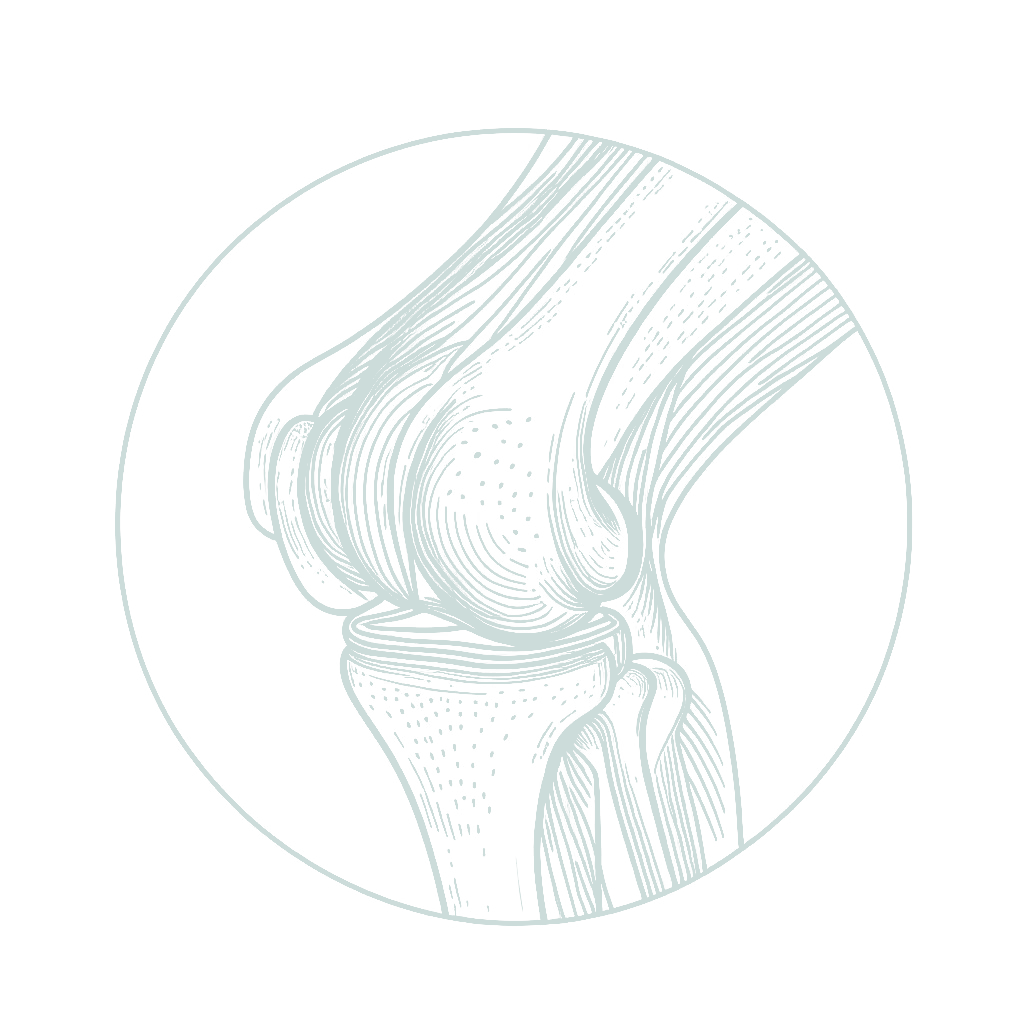ACL Reconstruction Rehab Protocol
Dr Myles Coolican
The following is a more detailed rehabilitation protocol useful for patients and physiotherapists. It is a guide only and must be adjusted on an individual basis taking into account pain, other pathology, work and other social factors.

Stage 1
Acute
(0 - 2 weeks)
Goals
- Wound healing
- Reduce swelling
- Regain full extension
- Full weight bearing
- Wean off crutches
- Promote muscle control
Treatment Guidelines
- Pain and swelling reduction with ice, intermittent pressure pump, soft tissue massage and exercise
- Patella mobilisation
- Active range of motion knee exercises, calf and hamstring stretching, contraction (non weight bearing progressing to standing), muscle control and full weight bearing.
- Aim for full extension by 2 weeks.
- Full flexion will take longer and generally will come with gradual stretching.
- Care needs to be taken with hamstring co contraction as this may result in hamstring strains if too vigorous.
- Light hamstring loading continues into the next stage with progression of general rehabilitation.
- Resisted hamstring loading should be avoided for approximately 6 weeks
- Gait retraining encouraging extension at heel strike
Stage 2
Quadriceps Control
(2-6 weeks)
Goals
- Full active range of motion
- Normal gait with reasonable weight tolerance
- Minimal pain and effusion
- Develop muscular control for controlled pain free single leg lunge
- Avoid hamstring strain
- Develop early proprioceptive awareness
- Use active, passive and hands on techniques to promote full range of motion
- Progress closed chain exercises (quarter squats and single leg lunge) as pain allows. The emphasis is on pain free loading, VMO and gluteal activation
- Introduce gym based exercise equipment including leg press and stationary cycle
- Water based exercises can begin once the wound has healed, including treading water, gentle swimming avoiding breaststroke
- Begin proprioceptive exercises including single standing leg balance on the ground and mini tramp. This can progress by introducing body movement whilst standing on one leg
- Bilateral and single calf raises and stretching
- Avoid isolated loading of the hamstrings due to ease of tear. Hamstrings will be progressively loaded through closed chain and gym based activity
Stage 3
Hamstring/Quadriceps Strengthening
(6-12 weeks)
Goals
- Begin specific hamstring loading
- Increase total leg strength
- Promote good quadriceps control in lunge and hopping activity in preparation for running
- Focal hamstring loading begins and is progressed steadily throughout the next stages of rehabilitation
- Active prone knee flexion which can be quickly progressed to include a light weight and gradually increasing weights
- Bilateral bridging off a chair. This can be progressed by moving onto a single leg bridge and then single leg bridge with weight held across the abdomen
- Single straight leg dead lift initially active with increasing difficulty by adding dumbbells
- With respect to hamstring loading, they should never be pushed into pain and should be carefully progressed. Any subtle strain or tightness following exercises should be managed with a reduction in hamstring based exercises
- Active prone knee flexion which can be quickly progressed to include a light weight and gradually increasing weights
- Gym based activity including leg presses, light squats and stationary bike which can be progressively increased in intensity as pain and control allow. It is important to monitor any effusions following exercise and if it is increasing then exercise should be toned down
- Once single leg lunge control is comparable to the other side hopping can be introduced. Hops can be made more difficult by including variations such as forward/back, side to side off a step and in a quadrant
- Running may begin towards the latter part of this stage. Prior to running certain criteria must be met
- No anterior knee pain
- A pain free lunge and hop that is comparable to the other side
- The knee must have no effusion
- Before jogging start having brisk walks, ideally on a treadmill to monitor landing action and any effusion. This should be done for several weeks before jogging properly
- No anterior knee pain
- Increased proprioceptive manoeuvres with standing leg balance and progressive hopping based activity
- Expand calf routine to include eccentric loading
Stage 4
Sport Specific
(3-6 months)
Goals
- Improve leg strength
- Develop running endurance speed, change of direction
- Advanced proprioception
- Prepare for return to sport and recreational lifestyle
- Controlled sport specific activities should be included in the progression of running and gym loads. Increasing effusion post running that isn't easily managed with ice should result in a reduction in running loads
- Advanced proprioception to include controlled hopping and turning and balance correction
- Monitor potential problems associated with increasing loads
- No open chain resisted leg extension exercises unless authorised by Dr Coolican
Stage 5
Return to Sport
(6 months plus)
Goals
A safe return to sporting activities
Treatment Guidelines
- Full training for 1 month prior to active return to competitive sport
- Preparation for body contact sports. Begin with low intensity one on one contests and progress by increasing intensity and complexity in preparation for drills that one might be expected to do at training
- To improve running endurance leading up to a normal training session
- Full range, no effusion, good quadriceps control for lunge, hopping and hop and turn type activity
- Circumference measures of thigh and calf to within 1 cm of other side.
For all appointments and enquiries, please call (02) 9904 6099
8:30am to 5:30pm - Monday to Friday
Level 2, The Landmark
500 Pacific Highway
St Leonards NSW 2065
Getting Here
© 2011- Dr Myles Coolican